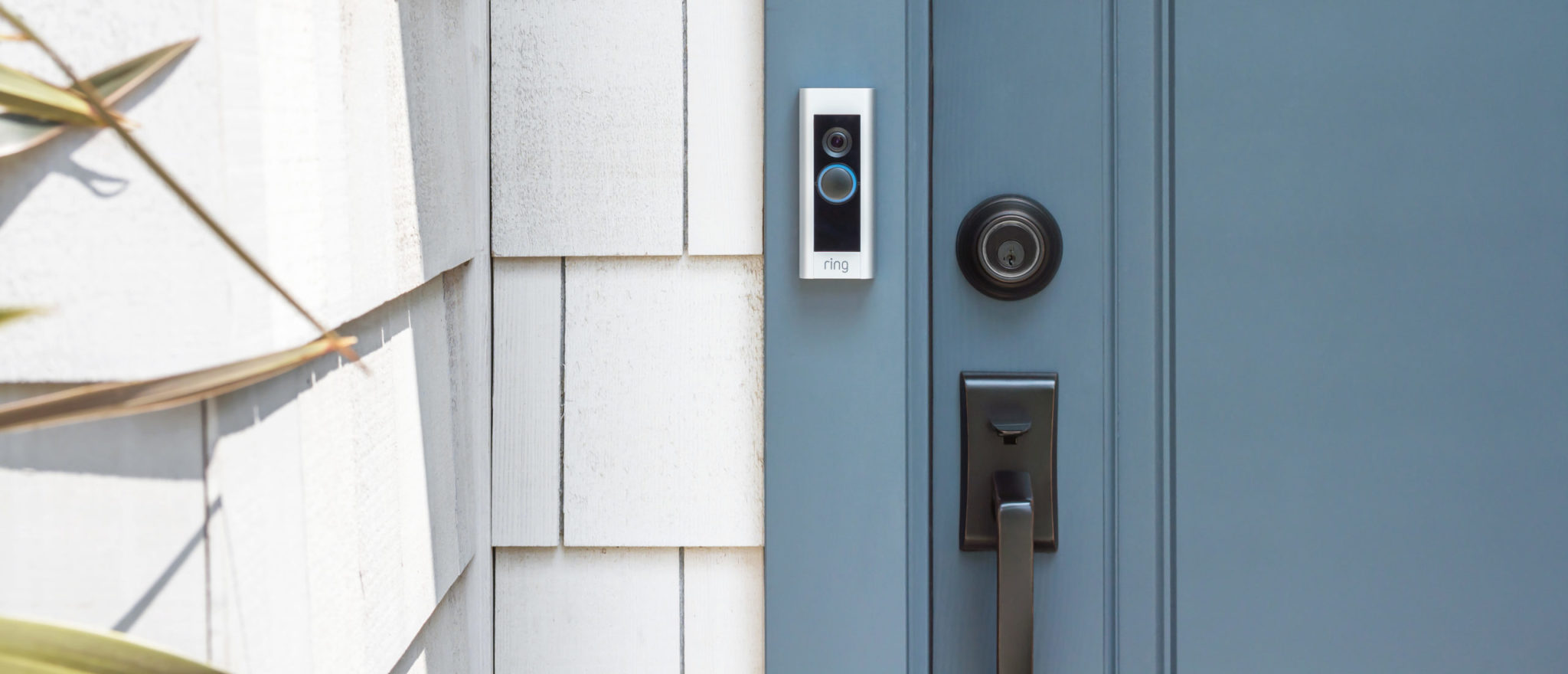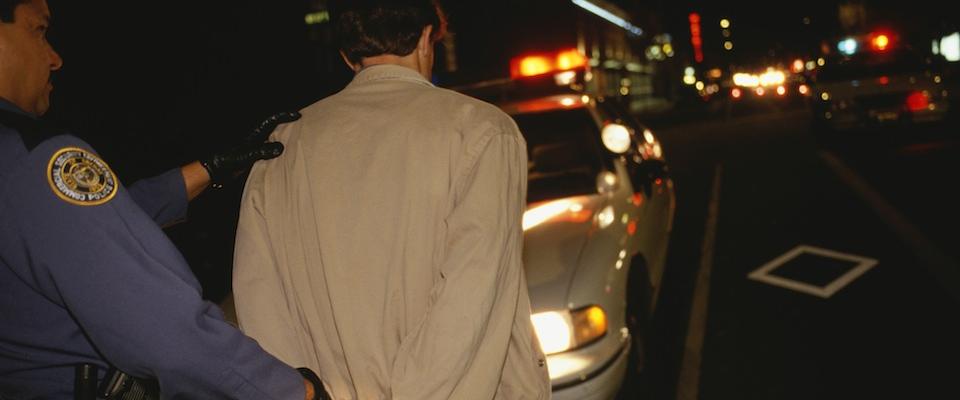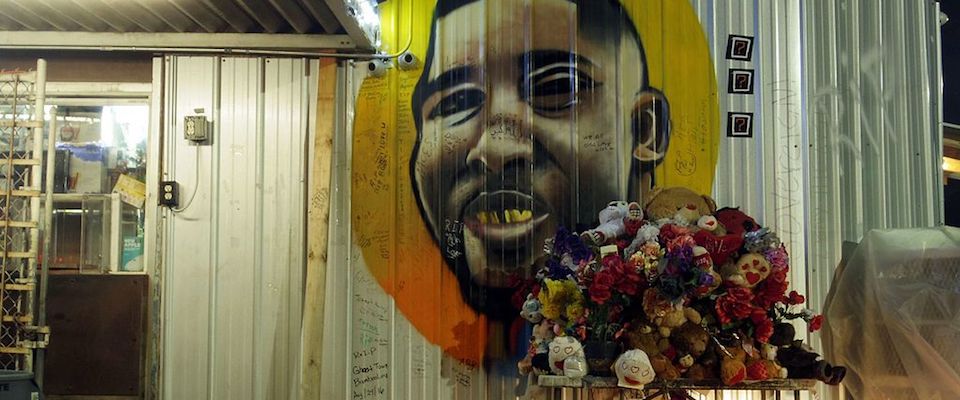In August 2019, it was reported that Ring, the doorbell-camera company owned by Amazon, was partnering with hundreds of local police departments around the country. As part of this new collaboration and an increasingly extended surveillance system, Ring provides law enforcement with the video and audio that the device records outside of residents’ homes. Some police departments have even offered citizens heavy subsidies to buy these doorbell-cameras and to download Neighbors, an app developed by Ring, which people use to report “suspicious activity” they’ve witnessed or recorded in their neighborhood. Police have said that the information provided by the footage and the app is crucial for keeping neighborhoods safe from burglars and trespassers. Meanwhile, critics are pointing to the potential dangers of outwards-facing surveillance devices and raising concerns about privacy and police overreach.
Ring doorbells connect to the resident’s phone, alerting them when someone is at the door, either ringing the doorbell or simply moving outside. The footage recorded by Ring doorbells can be uploaded to the cloud and then downloaded by law enforcement officials; once downloaded, the videos can reportedly be kept, and shared, indefinitely, whether they show evidence of a crime or not. Ring has said that the police can only request footage that has been recorded by civilians’ doorbells but isn’t entitled to it—however, many police departments hand out free Ring cameras to residents, which they receive for free from Amazon. As part of this agreement, the owners of the cameras are explicitly required to give law enforcement access to their footage. In this way, law enforcement essentially becomes crowdsourced: people can upload unvetted images, observations, and suspicions in order to alert their “community” about any unseen activity.
Catherine Crump is the director of the Samuelson Law, Technology and Public Policy Clinic at UC Berkeley, where she researches the impact of new technology on civil liberties and the justice system. Among many other subject areas, she’s done research on the automatic license plate reader, a device that converts images of license plates into readable text to give the police more accurate location information on the people they’re monitoring. She spoke to California about the technological and legal implications of this device, and the significance of this new third-party surveillance that Ring represents.
This conversation has been edited for length and clarity.
Can you paint a picture of what the police might be able to access in areas where they’re collecting this data? What do all these images and videos add up to?
Catherine Crump: Ring video doorbells record both video and audio, and they’re increasingly popular. One reason is because some police departments, with the help of Amazon, subsidize the cost of installing them, or even incentivize people to install them, not just so they’re looking right out at someone’s doorstep, but also looking more broadly onto the street. What law enforcement can do—what Amazon is providing to law enforcement—is the ability to access this map of where all of these cameras are installed, and then to request footage from people who have installed them.

We’re quickly becoming a society where there is not just a camera on every street corner, but one on every house, recording not just video but also audio. So it’s raising questions about, under what circumstances should the police be able to access that footage? You can certainly see why it’s a potentially useful investigative tool. I think there’s also some concern, though, that people should be able to relax in their own neighborhoods and walk down the street without being concerned that they’re being constantly surveilled—and particularly that the footage is going to end up in the hands of law enforcement agencies.
One of the most radical things about the Ring doorbell is that it records audio by default. And that’s a big deal because right now there are lots of surveillance cameras around, and increasingly on not just street corners but also city buses—and they don’t record audio by default. Ring is really the first mass surveillance technology that records not only what people do but what they might say. And so that alone has the potential to really change people’s expectations of privacy: how much privacy you have not just moving on a public street, which maybe other people would see, but a permanent recording of what you say.
There are a number of states around the country that have these two-party consent eavesdropping statutes, and the idea is that both parties have to agree to record before recording. There’s a tricky and unresolved legal question about whether, in at least some states, installing a Ring doorbell and recording audio violates the statute. And I think Amazon and Ring know this. If you dig deep into their website, there’s language saying, ‘It’s your responsibility—the Ring doorbell owner—to check whether the audio function is incompliant with local rules. By the way, here’s how to turn it off.’
Do you see similarities between this and automatic license plate readers? Is this part of a broader trend?
CC: There’s just an increasingly large arsenal of technology that can be used to engage in mass surveillance—surveillance of people without any particular suspicion that they’ve engaged in wrongdoing. And the cost of these technologies is falling, to the point where price is just not a limiting factor. That may particularly be the case because the federal government is often subsidizing local installation of these technologies, maybe on the condition that it can access the data itself. So it’s just raising questions of whether we want to live in a constantly monitored society, and how much we trust the people doing the monitoring.
The common refrain is that this kind of surveillance—surveillance generally—is necessary to keep us safe. Is there any evidence that this is actually the case?
CC: There’s no definitive evidence one way or the other. There have been a limited number of studies about the impact of surveillance on crime, and the evidence is just really mixed. Some studies find it has no impact; others find that it has some impact. Others find that it has an impact on property crime, but not violent crime—that makes a certain amount of sense to me, because you might plan a property crime and look to see whether there’s a surveillance camera. I think violent crimes tend to be more spontaneous and might not be deterrable in the same way? But there’s just no scientific answer to that question. Which is often the case with the attempts of a lot of these surveillance technologies. They get adopted, they seem like a good idea, but they’re not rigorously tested.
What are the actual consequences of using this kind of technology to collect data on civilians? Could it potentially lead to people being, say, unable to buy a house or car?
CC: The most prominent claim about these doorbells, and the Neighbor app where individuals upload their data, is actually about racial profiling. Because it just turns out that white people in white neighborhoods take video footage of people of color and post it saying that it seems suspicious. They have no real evidence, but it wouldn’t be surprising if that also led to more complaints to the police about people of color doing things that others find suspicious. This could be one more variation of the depressing theme of police scrutiny of communities of color in ways that aren’t necessarily fair. Stop and frisk being the quintessential example of that.
The difference here, and what’s particularly disturbing, is that stop and frisk could be more easily blamed entirely on the state, whereas this is community-based self-surveillance. What’s the significance of the fact that in this case, it’s not the government but a private company marketing a surveillance product?
CC: The shift from surveillance being done by the government, to surveillance being done by many individuals, makes it much harder to contain. Because there are only so many police officers, one could imagine police regulation training laws being passed that regulate police behavior. It’s just harder to figure out what to do about hundreds of thousands, or millions, of people engaging in this surveillance. I think we’re going to be drawing First Amendment arguments because there’s a right to record in public places.
From a legal perspective, how can police use of private surveillance be resisted? For example, there was a recent ban on facial recognition technology in California. Might that play a role?
CC: It depends which part of the issue. A city can ban its police department from accessing Neighbor, or any part of the surveillance network. They can say it’s not a valid law enforcement technique, just as some cities said, “You can’t use facial recognition technology.” That doesn’t deal with the issue of private technology. That’s harder. The Fourth Amendment provides protection against unreasonable search and seizure, and the Supreme Court has said that you do have a reasonable expectation of privacy in public places. It’s possible that hook could be used to push back against really extensive networks of video surveillance. But it’s really just too soon to say.
What do you think this partnership between Ring and police forces says about the relationship between civil liberties and the justice system?
CC: Technologies are invented, [and then] police are free to adopt them because no one thought to regulate them. They become more well-known, and then legislatures or courts can step in to place limits. That’s a really important thing to do because ultimately it’s just the police department acting on their own, deciding what the balance is between pursuing public safety and protecting civil liberties. That’s the kind of vision that elected leaders in consultation with members of the public should make, because that’s about values. I think it’s just going to take some time for the political process to catch up to technological progress.




















